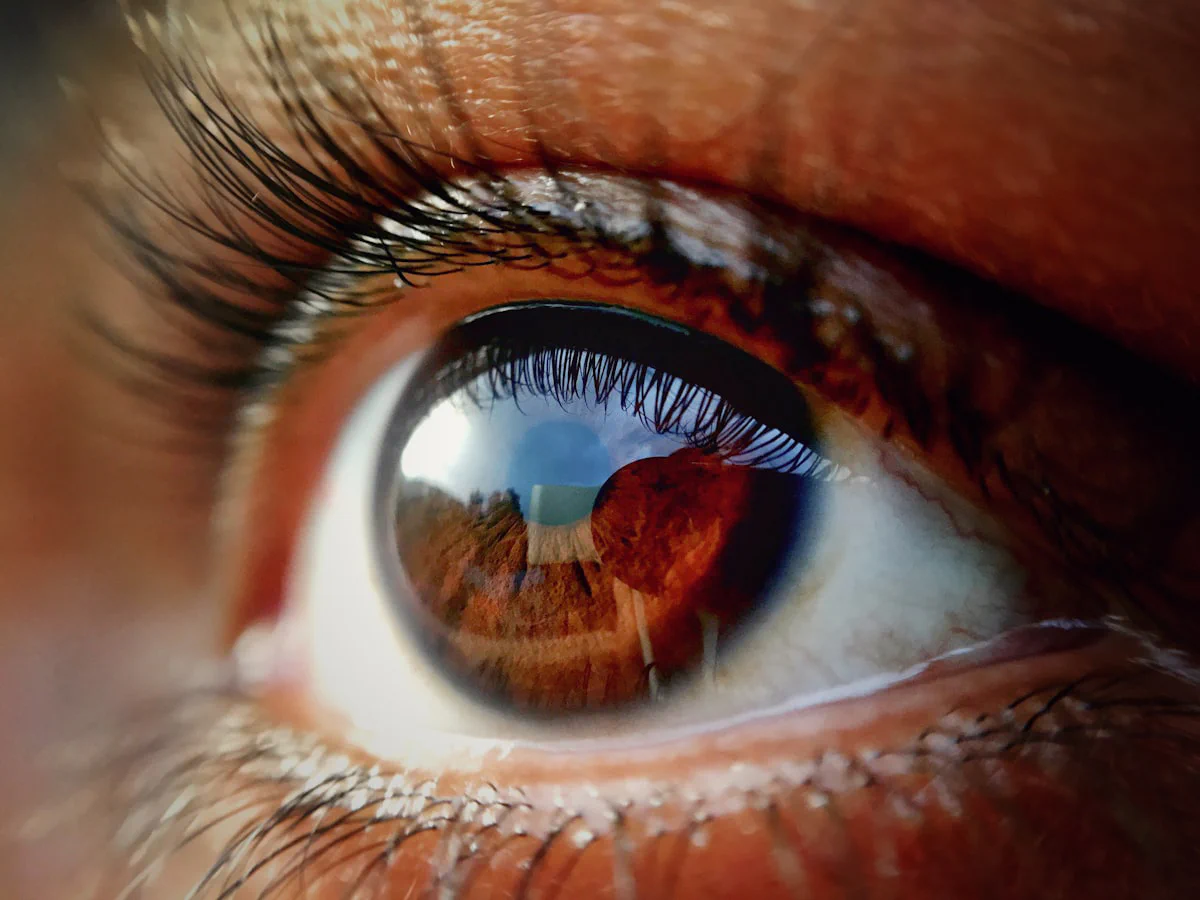Tratak in Historical Writings
Info
📜 Tratak is not only a meditative technique—it’s a preserved legacy. Passed down in yogic texts, health treatises, and esoteric scriptures, this article explores where flame gazing appears across time.
🔥 Introduction: The Written Flame
Before modern teaching apps and guided meditations, yogic knowledge was preserved in palm leaf manuscripts and memorized verses. Tratak—also known as steady gazing—appears in this tradition. More than just practical advice, it was a documented practice in Hatha Yoga, Ayurveda, Tantra, and spiritual commentaries. Today, this ancient practice continues to evolve in modern scientific research.
These writings form a timeline of transmission, showing how Tratak evolved in meaning and application while maintaining its essence: flame as gateway, gaze as discipline.
📘 Hatha Yoga Pradipika
One of the earliest and most influential mentions of Tratak comes from the Hatha Yoga Pradipika (15th century CE). Verse 2.31 states:
“Trataka is to gaze at a point or object steadily without blinking until tears are shed. It removes all eye disorders and brings about clairvoyant sight.” — HYP 2.31
This concise verse sits within a chapter focused on the Shatkarmas, the six yogic cleansing techniques that prepare the aspirant for advanced practices. Unlike modern yoga which emphasizes asana, classical texts placed purity and control of the senses at the core. Tratak, in this context, is a psychosomatic discipline, engaging both physiological purification (specifically eye cleansing) and mental sharpening.
Swami Muktibodhananda’s modern commentary explains how tears signal physiological detoxification, while gazing without distraction builds steadiness of mind—a precondition for Dharana (concentration). The Bihar School of Yoga emphasizes Tratak’s capacity to stimulate the pineal gland and balance hemispheric activity of the brain.
In addition to vision enhancement, classical and modern texts describe Tratak as a doorway to inner perception. By fixing the gaze on a flame or dot, one trains the mind to still its habitual wandering and move toward meditative absorption (Dhyana). It is also said to induce visionary states, enhance visual memory, and sharpen intuitive awareness—core capabilities for advanced yogic progress.
One of the earliest and most influential mentions of Tratak comes from the Hatha Yoga Pradipika (15th century CE). Verse 2.31 states:
“Trataka is to gaze at a point or object steadily without blinking until tears are shed. It removes all eye disorders and brings about clairvoyant sight.” — HYP 2.31
Tratak is listed as one of the Shatkarmas, six cleansing techniques intended to prepare the body for deeper yogic practices. Alongside nasal rinsing (Neti) and digestive cleansing (Dhauti), Tratak was seen not just as meditative, but purificatory.
Modern interpretations by Swami Muktibodhananda and Satyananda Saraswati stress its dual role:
- Cleansing the optic nerves
- Sharpening mental clarity and concentration

It was a bridge between outer cleanliness and inner steadiness—fundamental to traditional yoga preparation.
📖 Gheranda Samhita & Classical Yogic Sources
The Gheranda Samhita, another classical manual on yoga composed in the 17th century, structures practice into seven stages—from purification to Samadhi. In its first chapter, under purification techniques, it outlines drishti sadhana and jyoti dhyana—gazing and light-based meditations that resemble Tratak in technique and intent.
Although the exact word “Tratak” isn’t always used, the Gheranda Samhita advocates gazing at luminous objects (like the tip of the nose, the moon, or a lamp) to develop internal steadiness. These gazing practices are linked to development of subtle perception and awakening the Ajna chakra, a bridge between mind and higher consciousness.
Elsewhere in the Samhita, instructions are given to gaze into a mirror or reflective surface, or concentrate on a bindu (dot), further affirming the use of external anchors to cultivate internal awareness. The underlying theme across these practices is clear: fixation breeds concentration, and concentration unlocks access to meditative depth.
When seen in parallel with the Hatha Yoga Pradipika, the Gheranda Samhita provides complementary instruction—highlighting that flame gazing, or its variations, were embedded across diverse yogic systems.
Another classical text, the Gheranda Samhita (17th century), though more oriented toward Ghata Yoga (body-based yoga), implicitly supports Tratak through its emphasis on drishti (focused gaze) and jyoti dhyana (light meditation).
- In Chapter 1, the text emphasizes gaze steadiness and internal observation.
- Though the word “Tratak” is not always explicitly used, the method aligns closely with the practice.
These writings help show that focused visual meditation was a common tool, known under various names, and revered across different yogic schools.
🧬 Ayurvedic Perspectives on Eye Health & Concentration
Classical Ayurveda, concerned with the harmony of bodily systems and sensory health, has several references that support practices similar to Tratak—even if the term itself is not used. The Ashtanga Hridayam (approx. 7th century CE), a major Ayurvedic treatise, includes recommendations for gazing at clarified butter lamps or natural sources of light during sunrise to maintain eye health.
According to the Charaka Samhita, netra vyayam (eye exercises) and trataka-like focus techniques are part of dinacharya (daily routine) for preserving vision and reducing mental vata (nervous energy). The Ayurvedic concept of ojas, or subtle energy, is closely tied to clarity of perception, and maintaining healthy sensory function—especially of the eyes—supports mental resilience.
In clinical Ayurvedic practice, eye diseases like computer vision syndrome, eye strain, or chronic dryness are now being managed by integrating Tratak-inspired techniques. Recent studies have evaluated Tratak’s role in improving ocular endurance, tear production, and blink rate. It is also used in Ayur-Yoga protocols to manage attention disorders and stress-induced fatigue.
By supporting both anatomical vision and mental clarity, Ayurveda’s alignment with Tratak reinforces its dual utility—wellness for body and mind.
Classical Ayurvedic texts like the Ashtanga Hridayam and Charaka Samhita discuss eye health extensively. While they don’t use the term “Tratak,” they reference:
- Netra shuddhi (cleansing of the eyes)
- Exercises involving distant and near gazing
- Visual fixation on oil lamps or natural light
In Ayurveda, such practices are meant not only for optical wellness, but also for neuro-sensory alignment—balancing the vata dosha and reducing mental restlessness.

Recent interdisciplinary studies (see reference [4]) confirm that such practices improve visual endurance and may aid in prevention of digital eye strain—giving new relevance to ancient methods.
🕉️ Tantric and Upanishadic Echoes
While classical yoga texts emphasize Tratak for purification and focus, tantric and Upanishadic literature explore it through the lens of symbolism and mysticism. In these texts, gazing at an external flame was not just training—it was initiation into inner fire.
In the Tejobindu Upanishad, a meditative treatise focusing on light (tejas), the practitioner is guided to meditate on a flame—not merely to improve focus, but to realize the light of the Self (Atman). Here, the flame becomes symbolic of inner consciousness: pure, formless, and constant beneath the flickering mind.
Tantric texts like the Mahanirvana Tantra or Vijnana Bhairava Tantra describe gazing practices involving yantras (mystic diagrams) and bindus (dots). These exercises aim to collapse the boundary between object and observer. Gaze becomes devotion; vision becomes union.
The bindu, in particular, plays a significant role. Tratak on a bindu is seen to activate Ajna chakra, said to unlock intuition, non-verbal cognition, and energetic insight. Gazing here is not passive—it is a direct method to ignite kundalini and dissolve duality.
These texts elevate Tratak from technique to spiritual sadhana, where light leads the seeker inward—toward silence, stillness, and self-realization. This mystical approach contrasts with modern scientific approaches to understanding the practice.
While Hatha and Ayurveda mention Tratak in functional terms, tantric texts and Upanishads often cloak it in symbolic language.
- The Tejobindu Upanishad and Mandala Brahmana Upanishad speak of inner light (jyoti) as the focus of meditation.
- Tantric manuals like the Mahanirvana Tantra reference bindu (dot) or flame symbols as visual anchors for Ajna chakra activation.
- Yantra-based practices instruct the seeker to gaze into a central point until the outer form dissolves.
This philosophical framing shows that Tratak was not only used to sharpen attention, but to access altered states, activate inner energy centers, and enter non-dual awareness.
“Fix the gaze on the bindu, steady the breath, still the mind—then the inner fire reveals itself.” — Mahanirvana Tantra
📚 Tratak in Modern Commentaries
Modern yogic lineages have not only preserved Tratak but evolved its application. The Bihar School of Yoga—founded by Swami Satyananda Saraswati—has institutionalized Tratak in its curriculum, combining it with Yoga Nidra, Kriya Yoga, and chakra meditation.
Swami Niranjanananda Saraswati expands on Tratak’s usefulness in early-stage practice. He categorizes it under antar mouna (inner silence) training, enabling practitioners to develop one-pointed awareness, essential for meditation. In his view, the flame does not merely hold attention—it absorbs it, burning away thought patterns.
Contemporary scholars like Mark Singleton position Tratak as part of a broader globalization of yoga, adapted to suit the modern need for cognitive clarity, stress regulation, and screen detox. Many modern teachers use Tratak as a starting point for mindfulness, often through mobile apps and guided sessions.
Scientific interest has grown too. Studies using EEG have shown that Tratak can increase alpha and theta brainwaves, linked to deep focus and introspective awareness. It’s even being explored in neuro-visual therapy and digital fatigue prevention, making this ancient practice highly relevant today.
Tratak, thus, is no relic. It is a living bridge between tradition and transformation—a ritual of light that continues to illuminate the mind.

This textual lineage reflects both continuity and adaptation. While the core practice remains—gazing into a point or flame—the context has expanded.
🔚 Conclusion: Textual Roots, Living Ritual
Tratak is not just oral tradition—it’s a written one. Across centuries and schools, it has been documented, preserved, and interpreted in multiple ways. From physical purification to spiritual insight, Tratak has been a thread through yoga, medicine, and philosophy.
And now, it’s yours to experience—not just as a reader of texts, but as a seer of flame. Explore the ancient rituals involving flame gazing to deepen your understanding of this timeless practice.
📚 References
- Muktibodhananda, S. (2006). Hatha Yoga Pradipika Commentary. Bihar School of Yoga.
- Saraswati, S. (1981). Asana Pranayama Mudra Bandha. Bihar School of Yoga.
- Singleton, M. (2010). Yoga Body: The Origins of Modern Posture Practice. Oxford University Press.
- Kumar, R., et al. (2021). “Effects of Eye Exercises and Trataka on Visual Fatigue in IT Professionals.” Indian J Occupational Therapy, PDF
- Mallinson, J. (2007). The Shiva Samhita: A Critical Edition. YogaVidya Press.
- Tejobindu Upanishad. (trans. Swami Madhavananda), Vedanta Spiritual Library
- Gheranda Samhita (trans. James Mallinson), Digital